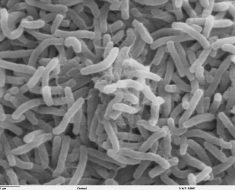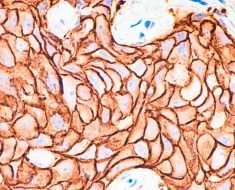Working with colleagues in the U.S. and in China, University at Albany School of Public Health faculty and students have released new findings about the cardiovascular health impacts of environmental factors, including results suggesting that current extreme-weather warning thresholds may not be sufficient and that owning pets might provide protection against hypertension.
The three projects featured below are collaborative efforts between a team led by Shao Lin, professor of Environmental Health Sciences and Epidemiology and Biostatistics, and colleagues from the Centers for Disease Control and Prevention (CDC), the National Weather Service, the New York State Department of Health (NYSDOH), and other universities including Sun Yat-sen University in China.
Heat Exposure During Pregnancy: Does it Matter?
According to Lin, previous experiments on animals and limited human studies suggest that a pregnant mother’s exposure to extreme heat may increase the likelihood that her child will be born with an adverse birth outcome. Now, Lin said, results from her recent study show good and bad news.
As the principal investigator of a project funded by National Institute of Health, Lin worked with students Ziqiang Lin and Yi Lu, a visiting scholar from Guangdong General Hospital, NYSDOH, CDC, the U.S. Environmental Protection Agency, Stanford University and others. Using data from the National Birth Defects Prevention Study, they studied 5,848 congenital heart defect cases and 5,742 babies with no major structural deficits as the reference group by linking and comparing weather conditions experienced in the critical development period of the fetus.
Overall, they found no significant relationship between extreme summer heat during the fetus’ critical development period and congenital heart defects in most regions studied. However, the team found that 3-11 days of exposure to extreme heat during summer and spring was significantly associated with an increase in certain congenital heart defects study-wide.
Further, ventricular and atrial septal defects, known as a “hole” in the interior wall of the heart, are the conditions most likely to be related with exposure to extreme spring heat. This was especially evident in the Northeast and Southern United States, but more research is needed to confirm these findings, Lin said. According to the American Heart Association, ventricular and atrial septal defects are among the more common, treatable heart defects.
“We found that the long duration of unseasonable heat may be related to the increased risks of certain heart defects” said Lin. “Our findings recommend possible early warnings against heat in transitional seasons for pregnant women.”
Cold Weather Warnings: Is a Change Needed?
Lin and doctoral students Wayne Lawrence and Ziqiang Lin collaborated with colleagues from the National Weather Service to determine if the current thresholds for cold-weather warnings in New York State are sufficient to protect cardiovascular health.
Using discharge data provided by NYSDOH on 662,625 cardiovascular disease-related emergency department visits, the study compared the effects of wind chill and cold air temperatures on CVD. Meteorological factors, including air temperature, wind speed and barometric pressure were collected from the National Oceanic and Atmospheric Administration.
The team found an increase in cardiovascular disease effects occurred when the wind chill temperatures were as high as 25°F, significantly warmer than the current wind chill warning standard of -20°F. Wind chill temperature was a sensitive indicator of cardiovascular ED visits during winter, and among cardiovascular disease subtypes, hypertension related emergencies had the strongest relationship with both wind chill temperature and air temperature.
Lin, who is also the also associate director for global health research, says the team recommends that modifications be made to the current cold warning temperature threshold.
“Given that larger proportions of cardiovascular disease cases are happening at considerably higher temperatures than the current criteria, it’s something that should be considered,” Lin said. “We also recommend issuing cold warnings during winter transitional months, rather than only during the typical winter months.”
Pet Exposure, Air Pollution and Hypertension: Is there a Link?
Lawrence, a doctoral student in the Department of Epidemiology and Biostatistics, and Lin collaborated with a team of researchers at Sun Yat-sen University to investigate the interactions between exposure to pet ownership and air pollution on hypertension.
Together with Guanghui Dong, the project’s principal investigator and a professor of Epidemiology and Biostatistics at Sun Yat-sen University, the team studied 9,354 children aged 5-17 years from 24 districts in China. They obtained hourly concentrations of air pollutants from a municipal air monitoring system, monitored the subjects’ blood pressure and obtained information about past and current pet ownership and exposure.
The team discovered the association between exposure to air pollutants and hypertension was stronger in children without pet ownership compared to those with pet ownership. When examining differences by age, pet exposure was more protective against hypertension among elementary age children, suggesting a potential age effect. Additionally, the effects of passive smoke exposures on hypertension was greater among children without pets than children exposed to pets. The buffering effect was generally strongest for pet exposure in utero.
Source: Read Full Article





